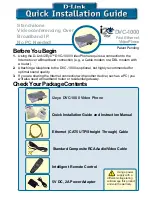
3DTouchPad User’s Guide
DS40001763A-page 14
2014 Microchip Technology Inc.
FIGURE 4-2:
PCB BOTTOM VIEW
4.3
3D GESTURE RECOGNITION
3D gesture recognition is realized with Microchip’s single-chip gesture solution,
MGC3130. The MGC3130 is a gesture recognition, motion tracking and approach
detection controller based on Microchip’s patented GestIC technology. It enables user
command input with natural hand movements while utilizing the principles of electrical
near-field sensing. Please find more detailed information at
.
MGC3130 is connected to four Rx frame electrodes (North, East, South and West)
located at the top of the PCB and one transmit (Tx) electrode which covers a full middle
layer of the PCB. The four Rx electrodes define the edges of the 3D sensing space (X
and Y direction). The sensing space reaches a height of up to 70 mm (Z direction).
Inside this sensing space, the user can perform free space gestures which are
described in Table 3-2.
4.4
2D TOUCH PAD
The 2D touch functionality is realized with Microchip’s MTCH63104, a PIC32-based
PCAP controller. It handles 12 Rx and 16 Tx nodes, which are located in the center of
the PCB (top layer) in between the 3D GestIC Rx electrodes. The edges of the touch
pad area are marked by a raised line on the top cover.
In order to ensure system stability and robustness, the PCAP Tx signal is driven by
Microchip’s MTCH652. MTCH652 is a Tx voltage booster solution which drives the Tx
signal up to 18V.
The 2D touch pad allows tracking of up to ten fingers simultaneously. Besides the 2D
multi-finger tracking functionality, a variety of surface gestures are implemented. These
surface gestures allow for example two-finger scrolling. A complete overview of the 2D
gestures is given in Table 3-1.
LEDs







































